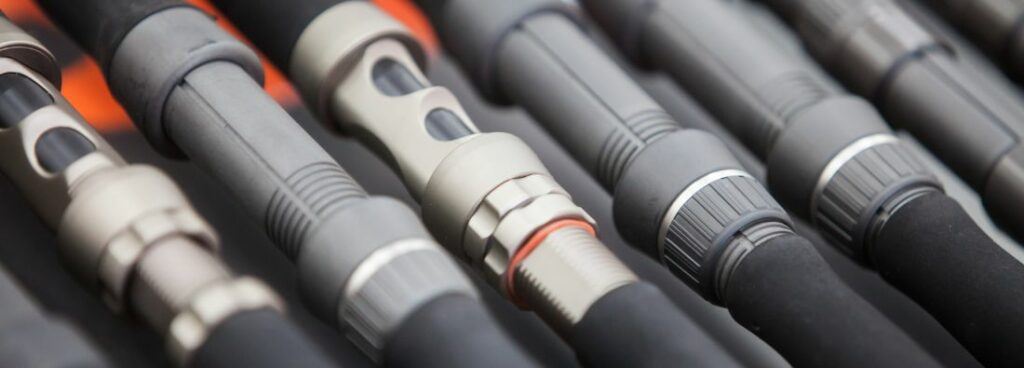Stories Worth Reeling In...
Last Updated on September 18, 2023
Conventional fishing rods are different from spinning and baitcasting rods in several ways. Unlike spinning rods with a fixed spool that rotates when you cast, conventional fishing rods use a star-shaped drag system to control the line.
They also have a longer handle, making them more suitable for longer casts and heavy lines.
Got you Hooked???
Well, if you want to know all about conventional fishing rods and what makes them ideal for certain types of fishing… stay with me!
Table of Contents
A conventional fishing rod has a fixed reel seat and is meant to be paired with a conventional reel. They are known for their versatility and are commonly used in various fishing techniques, including trolling bottom fishing, and jigging.
Conventional fishing rods are differentiated from other types of fishing rods, such as spinning rods, by their design and reel mounting position.
A traditional fishing reel is put on a typical fishing rod and fastened to the base of the pole.
The fishing line is kept in place by the reel and cast and controlled by the rod.
The handle, butt, blank, guides, and tip make up a standard fishing rod. The rod’s handle is the portion you hold, the butt is the end you brace against your body, the blank is the middle section that gives the rod its strength, and the guides are used to manage the fishing line.
The end of the rod used to cast the line is called the tip.
Traditional fishing rods can be utilized for various fishing techniques, including trolling, jigging, and offshore fishing.

Different types of traditional fishing rods are made for different kinds of fishing. Let’s take a closer look at each of them:
There are a few important things to consider when choosing the right conventional fishing rod.
First, think about the type of fishing you will be doing. If you are fishing in saltwater, you will want a rod explicitly made for saltwater fishing, as saltwater can be corrosive to traditional fishing rods.
If you are fishing in freshwater, you can choose a conventional rod made for freshwater fishing.
Second, consider the size and weight of the rod. If you are fishing for smaller fish, you will want a lighter rod, while if you are fishing for larger fish, you will want a heavier rod.
It is also essential to consider the size of the reel you will use, as you want the rod and reel to be properly balanced.
Third, consider the type of material the rod is made of. Graphite and fiberglass are two common materials for traditional fishing rods, and each has advantages and disadvantages.
Graphite rods are typically lighter and more sensitive, making them a good choice for finesse fishing.
Fiberglass rods, on the other hand, are generally stronger and better for fishing in heavy cover, making them a good choice for power fishing.
Maintaining your conventional fishing rod is essential to ensuring its longevity and performance. Regular cleaning, proper storage, and addressing any repairs are just a few steps to keep your fishing rod in good condition.
Electric reels are used in offshore fishing, particularly when targeting large species like Marlin. They offer anglers the ability to fight fish for extended periods without physical exhaustion and can take over when needed.
A push-button reel is simple to operate – you push the button, hold it down while casting forward, and release it. It’s often used by beginners and kids, providing an easy way to start fishing until they learn more advanced techniques.
Baitcasters or conventional reels are used for larger lures and baits, especially when bass fishing or going offshore for big fish. They have features like level winds and can handle heavier loads.
Whether a seasoned angler or a beginner, having the right rod for your fishing needs will make a massive difference in your fishing experience.
With so many different conventional fishing rods available, knowing what kind of fishing you want to do and what fish you want to catch is essential.
From trolling rods, stand-up rods, and live bait rods to jigging and bottom fishing rods, there’s a conventional fishing rod for every fishing style and technique.
In summary, a conventional fishing rod is a must-have for any fishing trip.
Happy fishing!